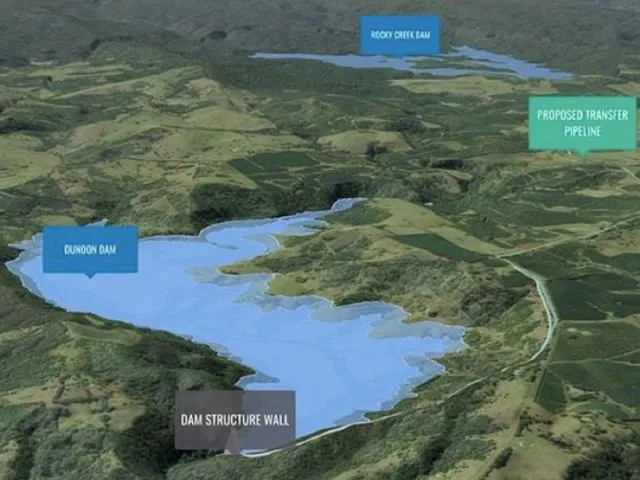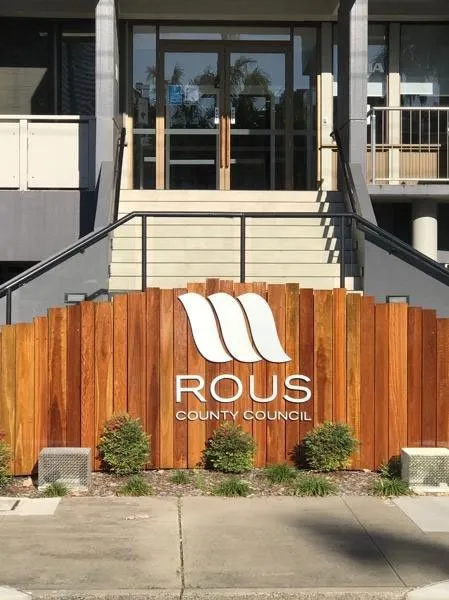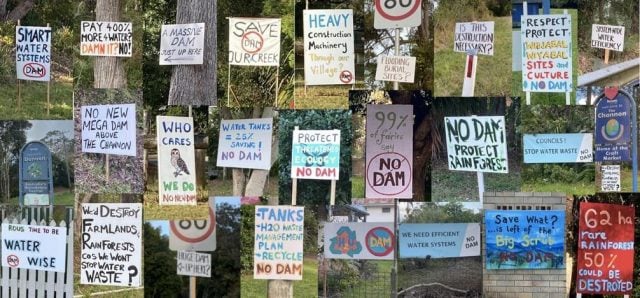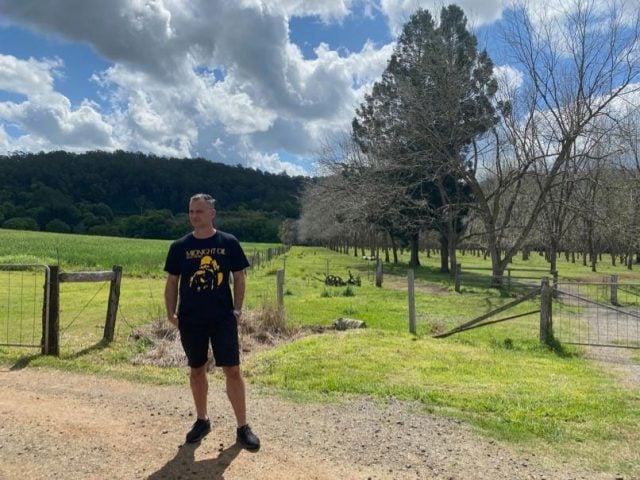‘The only thing as certain as drought in Australia is the stupid call to build new dams.’
– Maryanne Slattery 2019

In Australia there are over 800 major dams. So why do we need more?
Less than 2.5 per cent of water on Earth is fresh, and humans have dammed over half of the rivers around the globe. Dams significantly modify landscapes and have immense ecological and social consequences. Whilst many water management authorities view dams as critical to building ‘societal resilience’ in the face of impending climatic change, increasing environmental awareness is contributing to the belief that dams are actually a hindrance to socio-ecological resilience.
Put ‘on hold’ indefinitely in 2014 by Rous County Council (RCC), or so the local community thought, the proposed Dunoon Dam in the Lismore region of northern NSW started trickling back onto the agenda in late 2019 as one of Australia’s worst droughts on record savaged much of the country. Australians started to panic, and so did water resource managers.
After significant community opposition and 13,000 public submissions (86 per cent being against the dam) RCC voted against the Dunoon Dam in July 2021 and agreed to follow a different strategy, which included assessing the use of groundwater and water recycling. However, the NSW government just wouldn’t accept the long-standing opposition by traditional owners or the broader community’s decision, and decided to release a new strategy called the Future Water Project 2060. This lead Rous County Council (RCC) to their recent backflip on the initial community-led decision, and they’ve put the Dunoon Dam back on the agenda. Again.

Controversial dam?
The proposed Dunoon Dam is an incredibly controversial topic, and one that is dividing the local community. If the new dam goes ahead then irreplaceable ancient lowland ‘Big Scrub’ rainforest (riparian ecosystems) and priceless Indigenous heritage sites including burial grounds and scarred trees will be inundated and destroyed. Gone forever.
RCC, the local government body responsible for water resource management is ultimately charged with making the decision on whether the Dunoon Dam goes ahead. RCC currently provide 100,000 residents with water via the 14 gigalitre Rocky Creek Dam which opened in 1953. At 50 gigalitres the Dunoon Dam will be over three times the size of nearby Rocky Creek Dam leading one to ask, ‘Why so big?’. RCC have stated that the costs of building a 50 gigalitre dam versus a 20 gigalitre dam are roughly the same.
Prior to the RCC vote against the dam in July 2021, former RCC Chairperson, Mr Keith Williams (who was voted out in the last local elections held in late 2021), had stated that population growth and climate change were the key drivers behind the proposed $250 million Dunoon Dam. Williams also stated that use of ground water and potable reuse of wastewater had been considered as alternatives to the dam, but were just too expensive. However, the reality is RCC has not actually properly assessed different strategies, as detailed plans and costings for alternatives have never been completed.
What price can we place on destroying critically endangered ecosystems and priceless Indigenous heritage sites?

Photo Charles Hunter
Dams and socio-ecological systems
Human-managed natural resources, including rivers and dams, are complex socio-ecological systems and the proposed Dunoon Dam is more than just a water body. It is part of a major hydrological basin and also many complex and connected human and ecological processes.
Managing these complex socio-ecological systems requires strong governance frameworks that are critical to building socio-ecological resilience, and these governance frameworks must include community participation, the engagement of all stakeholders, and transparency and legitimacy in the engagement process.
In the case of the Dunoon Dam, when the project was being assessed in 2014 there was a community working group that worked closely with RCC. However, in 2020 there was no community working group, apparently owing to coronavirus, and the only community engagement was limited to public submissions (that said, there were still over 13,000 of them). Limited community engagement was again the norm in May 2022 indicating, yet again, a lack of transparency and process legitimacy. This key failure highlights a significant weakness in RCC governance framework.
The traditional owners who stand to lose significant cultural sites and who have also been strongly opposed to the dam since it was first proposed in the 1990s have been engaged directly by RCC, however, owing to threats and pressure from ‘white folk’ who support the dam, the RCC will not share details of their engagement with this important community group as they don’t want local Indigenous people viewed as the ‘gatekeepers’ of the project.

opposed to the Dunoon Dam. They want dam alternatives such as water recycling and better water use management. Photos Charles Hunter
Climate impacts and adaption plans
Anthropogenic climate change is creating an epoch characterised by much uncertainty and panic, and the slow pace of climate change policy needed to address these issues makes one actually question the concept of sustainability. There is still much public disagreement about climate change, even though there is a strong consensus amongst scientists. Debate continues as to how policy makers across all levels of government should respond,and this is clearly demonstrated in the case of the proposed Dunoon Dam.
The scientific consensus is that there will be many profound impacts driven by climate change that will be complex and unintelligible and affect marine and terrestrial ecosystems, and their biodiversity. The impacts of climate change will also affect the future demand and supply of water. There is a growing belief that the impacts of climate change will be hard felt at local levels and this has in turn created a pressing need for an increased focus on climate change adaption responses and planning at local levels – as we are seeing with RCC and the Dunoon Dam.
How to address and adapt to climate change at a local level is not only a huge responsibility, it also presents enormous challenges for governments at all levels to make decisions that involve the complex nature of society, politics and ecology linked to socio-ecological systems.

Dunoon in northern NSW. Rous County Council have been acquiring properties in the valley since 1995. Photo Angela Backshell
In the case of the Valley of the Dammed, just eight people – the board of RCC (perhaps with some newly attached puppet strings held by the NSW government) – will make the decision on whether or not the Dunoon Dam goes ahead, and the NSW State government is currently very keen on dams. Surely this is not good governance and throws into question the natural resource management policy framework in Australia?
♦ Charlie Hunter runs a carbon positive digital agency called www.tailbird.com.au. In his spare time he is an avid twitcher, conservationist and freelance writer, based in Bronte, Sydney, who can be contacted at [email protected].




I’m tired of hearing about primitive burial sites as being important. Nonsense. If it’s so important the bones can be dug up and buried elsewhere.
What is important are the remnant forests. If opponents of the dam want to be taken seriously stick to the latter concern.
Urea, you feel that ground under your feet? That’s stolen land. You know how it came to be degraded today? Rape. Murder. Theft. Slaughter. Displacement. Erasure. Of a people who have been living here for many thousands of years. These words don’t even big to summarise. Sucessfully and respectfully. To support the Dunoon Dam and destruction of SACRED burial grounds is to wield the sword of cultural genocide. Visible violence. Pure evil. To act out cultural genocide is to perpetuate the stupid hateful mindlessly violent actions which have got us into this very crisis. You can’t just relocate a sacred SITE. SITE. Place. Ecocide and genocide go hand in hand.
Advanced civilisation moves on from primitive religiosity. People, chickens, cats and rats and elephants die. We bury them. Nothing particularly sacred about that.
My Ancestors who have been living on this continent since time immemorial had an advanced civilisation operating for over 100,000 years until colonists came and begun the killing and destruction. This civilisation doesn’t look very advanced to me , people are destroying the very life systems that support us and doing so willingly like lemmings off the cliff.
What about digging up your Nanna bones urea , what do you feel about that or are you incapable of feelings ?
100,000 years is longer than humans have been out of Africa. Are you a different species?
We are not destroying the environment, we are modifying it. It’s our ancient cultural practice. Europe looks really pretty doesn’t it. And it’s very comfortable. Wasn’t like that before us. Our White man magic has doubled your life expectancy and given you all the comforts you enjoy.
Show some gratitude, and some respect. Our ancestors had to suffer and die to give you all of this.
Would you care if China was doing this in Europe? I bet you wouldn’t. Always depends which race it is doesn’t it.
Virtue signalling doesn’t make you a good person. Quite the opposite. It make you the thing you think you are standing against.
Well, judging from a couple of the responses to your post Leandra, clearly denial, ignorance and outright blatant racism are still around and underpinning the attitudes of some dam supporters. What a long way we still have to go on the road to reconciliation.
Your name calling and emotions are all you have.
Lives in Bronte, gets water from Warragamba, Avon, Cataract, etc. I guess the residents of Gympie are reconsidering the Mary R. dam. Barrageaphobia is a thing.
Gympie didn’t want the dam because it was to service Brisbane, not their own community.
Looking at the size of the proposed new dam, it could well be developer driven. More water, more development, more money to be made.
Has anyone ever considered the limits to sustainability when money could be made?
Our population would be stable (births – deaths) but we keep importing 120,000 third worlders each year so we can increase their carbon foot print ten fold. We need more space, resources, and housing for everyone. Australia will just have to burn so that everyone in the world can move here.
Making new dams is like embracing more tracking or a new coal mine. It has been shown in scientific circles since the 1970s that dams are detrimental to the surrounding environment and kill rivers by reducing or stopping their flow ( e.g. the Colarado River). Now they still in vogue, damming major rivers such the Mekong and Yellow rivers, what enormous damage are they doing, and what will it do to the water resources.
A City-centric view – as always, from the comfort of their comfortable urban arm-chair.
I love you Chuck, you’re the greatest.
A very interesting article. Charles Hunter explains why this dam project (a) has no social licence, (b) has no legitimacy from the ecological or cultural heritage standpoints, and (c) was slid back into consideration without due process by the new Rous councillors onto a compliant Rous County Council.
He could have added that the proposed dam is the most expensive and least secure water option in a time of climate change.
As for comments about Hunter’s place of residence: How do you know where he has lived? And even if he has lived in Bronte for some time does that mean he doesn’t ever travel to other places and can make observations? Conversely, should rural folk be barred from commenting about cities?
Mike’s comment above about the dam being developer-driven nails it. The development mentality, coupled with a belief in growth-without-limits, means that nutty projects like this one appear to get legs.
uh ah. Let’s just build the dam already. It’s needed.
A simplistic response that suggests you don’t like to actually engage with the points raised, Christia, but prefer a silly slogan. That’s your right, but maybe you should listen to the real water experts, who say that that dud dam isn’t needed.
We need more water. Dams work. The science is settled. Stop being a science denier jimbo.
Christian Steinberg Can you point us to the science that shows the Dunoon Dam is needed? I have been unable to find any, settled or otherwise.
They don’t like it when I post links here, even to government websites, so I’ll point you to the ABS website. They can confirm that importation of third world voters quadruples our population growth, and these people expect to be provided with things like water and housing and food and stuff.
If you need proof dams provide water, there is 6000 years of Western civilisation (I’d argue longer). I suggest you start with the Roman Republic. Their Aqueducts and Reservoirs still provide water today. They started importing third worlders from Northern/Eastern Europe and *SPOILERS* it didn’t end well. Keywords: Goths, Visigoths, Vandals Extra credit: Hyksos, Picts. That should get you started.